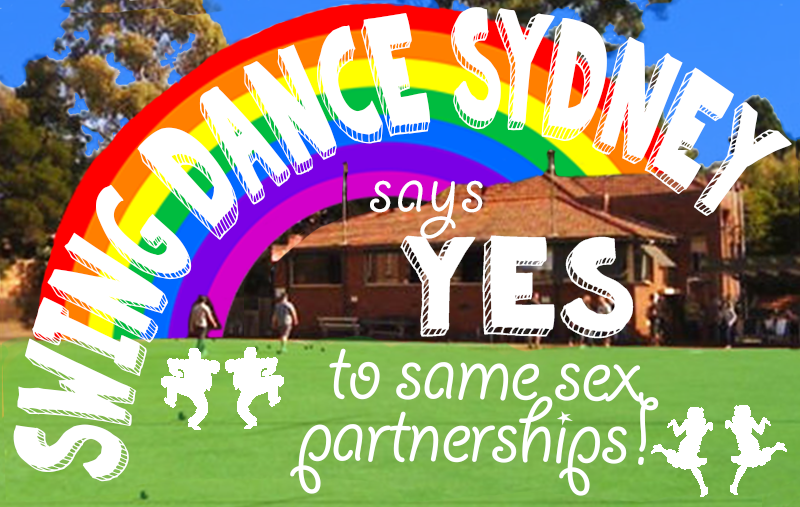I’m back from Herräng 2017, and feeling a bit better about the dancing world’s response to sexual harassment.
Just a reminder that there are a whole heap of organisers, DJs, volunteers, and generally good peeps who are watching and acting on information about men who’ve been reported as sexual offenders. Most of them aren’t famous or big names. Almost all of them are quietly squirrelling away on this issue.
Each time I travel I meet people who have incredibly good, well-thought out processes and plans. The international lindy hop community has leapt onto this issue.
They work hard to protect and maintain the anonymity of the women and men who report offenders. They’ll receive threats (physical, legal, emotional, financial), and will be snowed under with paper work and processes.
Almost all of the men who’ve been reported aren’t famous teachers or even well known dancers. There won’t be blog posts or well-trafficked posts about these men. Very few other men will even have noticed them, and it’s unlikely famous teachers will boycott events if these offenders attend. They’re all ages, all ethnicities, all classes, and all over the world. I have not come across a single incident in the last two years where the report has been unfounded. In most cases women are _under_ reporting or playing down the behaviour of these men. And there have been a lot of reports.
These men are almost comically similar in their behaviour and patterns. It’d be funny if it wasn’t so shitty. So offenders are relatively easy to spot. And people are watching, keeping an eye on each other.
These reports trickle in every week, all over the world, and the that network of organisers, DJs, volunteers, and good peeps will be keeping each other in the loop about their movements. Facebook has never been busier with messages organising meet ups and conversations, keeping people aware of which offenders are moving where and doing what.
You can bet your bottom dollar all the people who are working on these reports will get them out their dances and parties.
So if you do report once, and you don’t get a good result, please do try again. There are plenty of good peeps who have your back.
Men: stop that jerky sexist shit. Those sexist objectifying ‘jokes’ in dance contests, the jokes about ‘boob swipes’ in class, the laughing ‘games’ between higher profile men. All of that sends messages to other men that this behaviour is ok, and to women that they need to just tolerate this. Don’t offer to walk us to our cars. Just stop encouraging other men to treat women like jokes.
And all those people working on this issue don’t need your bullshitly immature behaviour muddying the water. Stop being jerks; get your shit together.
Patterns to watch out for. ie stuff I’ve seen or had reported as part of a report of assault or harassment. So many times it’s getting stupidly obvious:
Overly controlling, rough, or sexualised dancing on the dance floor.
– unwanted/non-consensual dips or movements where women are forced into positions;
– ‘blues dance’ moves/styles/steps in a lindy hop context. When women complain about these movements, these men almost always describe them as ‘blues dance’ moves, hence justifying their behaviour and delegitimising women’s complaints;
– ‘teaching’ or ‘telling’ newer or younger women dancers how or what to do during a dance or between a dance. This usually means these women are isolated from other people on the floor between dances as these men mansplain their rough or controlling behaviour.
– targeting younger or less experienced women (of all types of appearance) and asking them to dance repeatedly – they literally comb the room with their eyes.
Stalking:
– constant facebook messages, comments, emojis, photos, tagging in other people’s photos, requests for friending
– repeated requests for phone numbers relatively early in a friendship (eg the day they meet a woman), in person and via social media. Usually for an ostensibly legit reason – to clarify details of an event, find out where the party is, etc)
– constant text messages, phone calls, and pics via phone at all hours and times. Often with emotionally ‘sincere’ or ‘confessional’ tones – eg stories about their emotional vulnerability, their past relationships, etc. Basically, stories about _them_.
– repeated and intrusive invitations to dance – interrupting women’s conversations with other women (to isolate them) cutting in after one dance with another partner, multiple dances in a row at a single party, followed by invitations to ‘private parties
– invitations to ‘private parties’ or events that are presented as group events, but turn out to be just him. These are usually ‘blues’ parties at someone’s house or a secluded venue. The man is usually the only person with the details, and they may collect the woman in their car.
– dropping the woman home after a dance (so they know where she lives), then ‘dropping in’ repeatedly, or making sure they’re the only person who drops her home after a dance. And then keeping her in the car or coming up to her house with long ‘deep and meaningful’ conversations. Mostly about him.
Targets:
– younger, less experienced women dancers
– women with less confidence.
– often have younger girlfriends and keep the relationship secret ‘for privacy’. When other dancers discover the relationship, they are frequently surprised that such a ‘shy’ or ‘quiet’ woman is with such a socially outgoing or spontaneous man.
These men:
– all nationalities and ethnicities
– not incredibly handsome or attractive, but usually quite ‘ordinary’ or ‘inoffensive’ – ie strangers probably won’t remember them.
– not usually super fashionable, but often reasonably well dressed. This can really vary between scenes and dance styles, though. They tend to ‘fit in’.
– very rarely very high profile teachers or performers
– may describe themselves as ‘teaching’, but only teach privates or smaller events – usually blues or another niche dance (eg fusion, or another blended dance) which doesn’t have a big presence in that city
– may teach at smaller events, but don’t have a high profile, and aren’t terribly well regarded. May eventually become a standard face in a teaching cohort, but never at a highly respected level. May teach interstate or even internationally at very small scale ‘intimate’ events run by less experienced organisers.
– if they don’t have actual teaching gigs, they frequently teach on the dance floor, or offer to ‘work with’ or ‘practice’ with newer women dancers privately, and present themselves as specialists who like to dance ‘their own style’ and have no patience with formal workshops.
These men work the long game. They put in a lot of ‘ground work’ to groom a woman which they eventually sexually assault, or enter a relationship with where they assault their partner repeatedly. Within a relationship they gradually escalate the assaults, as they gain greater control of these women and isolate them. Women may begin by feeling a bit ‘pushed’ to do deep kissing at a party with other people near by, to ‘mess about’ with this man and another partner (often another woman), to have unprotected sex in otherwise consensual situations. But the sexualised coercion escalates and happen in concert with other controlling behaviours – belittling comments in public, isolation, etc. And then they become more clearly assault and often very violent. The women become ‘quieter’ and more withdrawn at social events.
These men:
isolate
(dominating women at dances, taking them out after dances)
doubt (degrade or critique until women question their own minds and decisions)
dominate
(stalking online with constant fb messages, text messages; dancing in ways that showcase his status and ability and allow her zero creative space)
avoid
(more confident women, figures of authority, and legit events)
It’s very unlikely you’ll ever see them offend at a public event. Even if you’re watching closely. If you do call them on a dodgy hand position, they’ll either make excuses or apologise profusely. Then avoid you.
Please note: it’s the relationship between these behaviours that make patterns. So there’s nothing wrong with asking for someone’s phone number, calling them up, having a D&M then getting together and having gloriously consensual sex. All within a weekend.
But the combination of factors is what we should be watching for.
So you can see why it’s important for us to address seemingly ‘small’ issues like non-consensual dips on the social dance floor, right?
Does everyone see that sexual assault isn’t just a random dood attacking a woman on the street, that we can prevent by having a famous dancer walk a woman to a car? Or by carrying bear repellant?
(This post and its comments brought to you by arriving home to yet another assault report, depressing in its familiarity. It’s as though these men have a manual and just follow it. PUA-style.)
In response to a comment from the ever-thoughtful Byron:
I’d like to find a way for that list of yellow and red flags to become something that’s shared readily within the dance scenes at large, maybe edited in a way that highlights what the dance scene SHOULD be like, and how to tell if someone is violating community standards in weird ways.
This is the sticking point at the moment. Most of the people I know are doing this very carefully, and mostly in person. Which of course is a challenge for scenes divided by geography.
But there is the risk of exposing yourself to legal action for defamation if you do share information publicly (even by email).
Yet it is possible: you just need to get good, solid legal advice. Which is what I’m currently doing. Costs a fair bit of money, and the laws are different between Australian states (let alone countries), so you need real, legit legal advice (not internet legal advice). And I certainly won’t advise on it. But lawyers specialising in defamation can simply and easily write up a template letter and advise you on how to send letters or emails to other organisers warning them about these people.
A very very important step: all events and organisers need a policy, a code of conduct (ie a list of rules posted publicly), and a practical process, and then a reporting process. If these are in place before communicating info about known offenders, then organisers can prove that their actions weren’t personal malice, but professional process (hence avoiding some legal action). It’s also important because it helps organisers develop a clear sense of their own values, and become confident in their thoughts and actions. And most offenders rely on a lack of confidence or clarity in people’s thinking.
This is also why it’s essential that we drum it into all dancers that we all have a right to a freedom from sexual harassment and assault, and that we are all the best judges of our own limits and personal space and liberty. Dance classes _must_ prioritise this.
I am becoming more and more certain that a student-centred approach to teaching lindy hop is central to this – we have to encourage students to trust their own decisions and thinking. Not just tell them ‘here is the answer’ and then demand they do things one single way (our way). The next teacher who starts a workshop saying “there are lots of ways of doing things, but this is _our_ way” gets a punch: there are lots of different ways of dancing. And they are all worth thinking about. Similarly, I am now 100% absolutely totally angry with teachers who forbid students ‘giving each other feedback’ or discussing how their bodies and they are feeling with their dance partners. It breeds a culture of silence and self-doubt in women.



